Have you seen the clouds of starlings on Blackpool Piers, the Tower and the beach?
In the cold months of winter they gather at dusk every day to roost on the buildings of Blackpool seafront. This beautiful photo of them at sunset (below) was taken by Visit Fylde Coast contributor Dawn Mander.
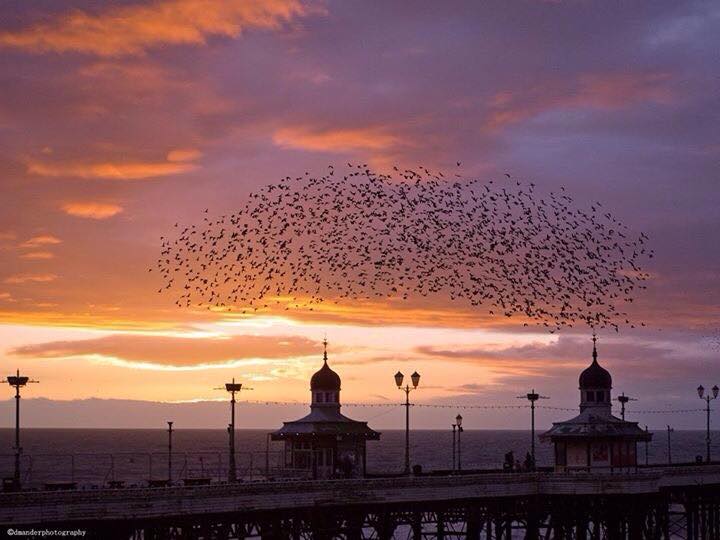
The Starling is a notoriously cheeky British bird – daring and brave he lives alongside man in our gardens and public places.
We were at Blackpool seafront near Central Pier in December 2020 and caught small flocks of them gathering for the night. They all went off to North Pier before our film finished…
Enjoyed this video? Why don’t you subscribe to our Visit Fylde Coast YouTube channel – make sure you don’t miss out!
They flock in numbers reaching literally tens of thousands. The birds perform stunning aerial acrobatics, swooping and diving as if one solid, black radio-controlled mass. First they land on the beach, then North Pier, then Central Pier. They might also land as a single mass on one of the other buildings along the seafront.
It’s fascinating to watch. Have a look at our brief video of the Starlings on Blackpool pier, filmed in December 2014 –
Enjoyed this video? Why don’t you subscribe to our Visit Fylde Coast YouTube channel – make sure you don’t miss out!
Bedtime for Starlings on Blackpool Piers
Eventually, as it goes dark, the birds land where they will roost for the night. The starlings usually spend the night gathered together in large numbers for warmth and safety, on the piers.
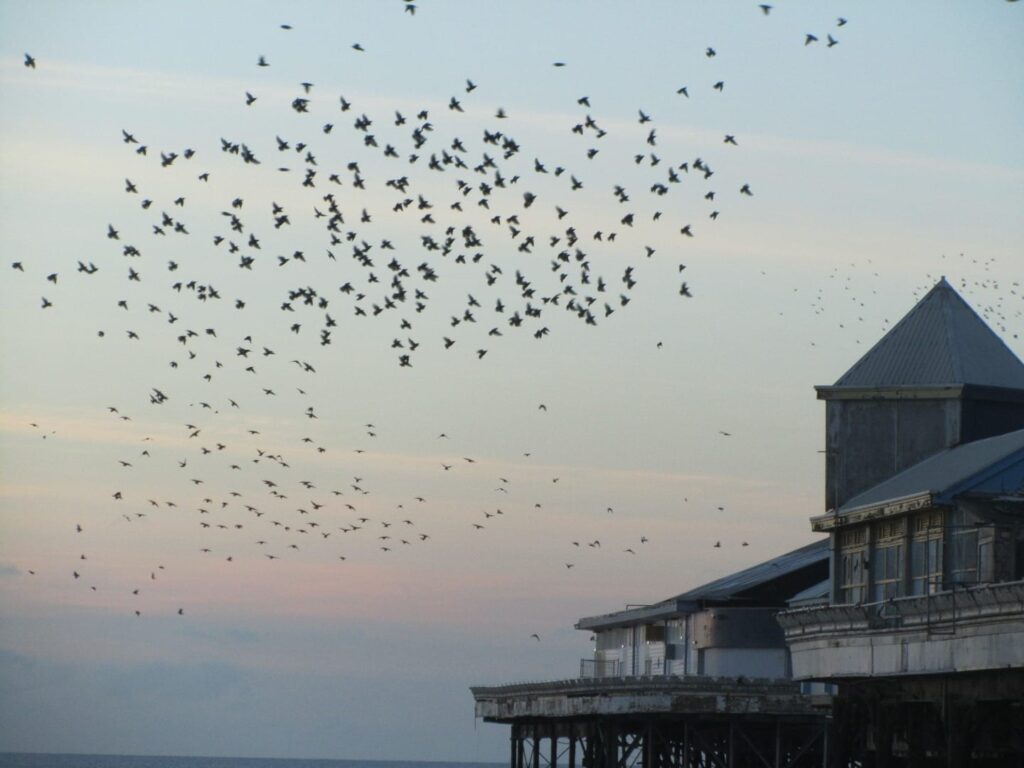
Where are the Starlings on Blackpool Piers from?
Some of these starlings are Sandgrown and, native to Blackpool, they live here all year round. Their numbers swell when they are joined by migratory Starlings that overwinter in our milder weather. They mainly fly in from Scandinavia. That’s how we end up with such huge numbers of starlings on Blackpool piers in winter.
A Murmuration of Starlings
The proper name for this avian display of starlings in flight is a ‘murmuration’. Blackpool seafront and the piers is one of just a few places in the UK where you can see such this display of roosting starlings. They also flock in huge numbers at nearby Marton Mere.
It’s amazing to think that each little bird contributing to the display looks like this –
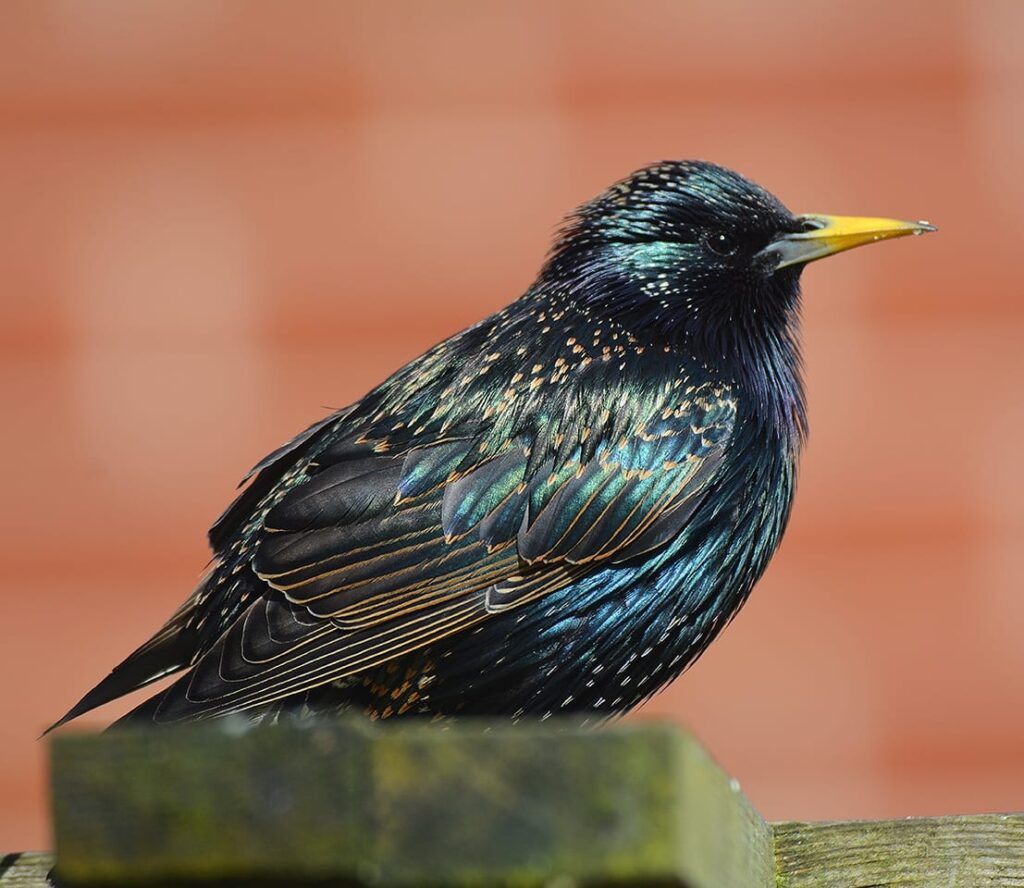
Best time to see the Starlings in flight
The best time to see the Starling displays is when they start to return to Blackpool, from about September. Most of the migratory birds are here by the end of October. You’ll be able to see them through November, December, January and February. By early Spring time they’ll have nesting on their minds.
The migratory visitors start to return to their breeding grounds from the end of February. Sometime in March they will have gone, until they return again the following Autumn.
More about Starlings at the Seaside
It’s probably fair to say that Starlings are a scavenging bird. With their long straight beaks they’re perfectly suited to digging grubs out of your lawn and hunting for bits of insect.
Their carnivorous ways give them an advantage when it comes to scavenging. They’re a common sight on the Fylde Coast where fallen food is plentiful – you’ll see them on the beach too. Nationally they’ve been shown to be in declining numbers, so it doesn’t hurt to give them a helping hand. Numbers of breeding birds have declined by about 2/3 since the 1970’s. A reduction in nest sites is partly to blame. But largely it’s a lack of food that’s made their numbers drop.

If you help them, they’ll help you too. You’ve probably seen Starlings digging in lawns. They’re after leatherjackets – the grub of the daddy long legs. These grubs eat the roots of your lawn, creating yellow, sickly looking patches in your emerald green turf. So the more that the birds can dig out, the better for your lawn. They also eat worms, spiders, slugs and snails, so if you encourage them you’ll have your own pest control service on hand!
Starlings tend to nest in holes in walls and roofs. They often return to the same place year on year. Whether it’s the same birds or different pairs is a good question. No doubt in more rural environments they nest in holes in tree trunks, but on the Fylde Coast they live happily alongside us people.
Our own garden birds
We had a hole in a little false roof on our house which they nested in for several years. Unfortunately for them, they made was a bit too much mess and in the wrong place. So the hole was filled in after their babies departed!
In retribution for removing their home, I provided them with an alternative. A couple of cockatoo nesting boxes from a pet suppliers, fastened just under the eaves where they’re sheltered from the weather. They’ve nested in there many times since, raised their babies and chattered to me while I’m in the garden.
The cockatoo boxes are well used all year round, as safe and dry roosts at night. They’re quite amusing too as they bob in and out of the two boxes, flying backwards and forwards between them. They also sit on the top too, close to the soffit and sheltering from the rain. The few pounds that they cost has been worth it in spades.
What do Starlings eat?
We feed Homer, our own tame seagull (with dog food) and they enjoy that. Picking up all the bits that the gull leaves. They also love cheese, cakes, and anything with a fatty content to it. Ideal food to buy for them is the suet balls, suet sticks, peanuts or sunflower kernels.
The treat you get for giving these birds a helping hand is listening to them twittering and watching their antics. They’re comical birds, and often mimic the sounds they hear around them. Including other birds voices, whistles, and even telephones and human noise. Their late summer song from the rooftops is a simple pleasure but a lovely one nonetheless – there for everyone to enjoy.
The future for Starlings
The Starlings future is not as bright as it once might have been. The annual RSPB Big Garden Birdwatch has revealed that Starling numbers have declined by a huge 80%. That’s over the 30 years they’ve been conducting the survey and collecting results. Only 15% of juvenile birds make it to the end of their first year of life.
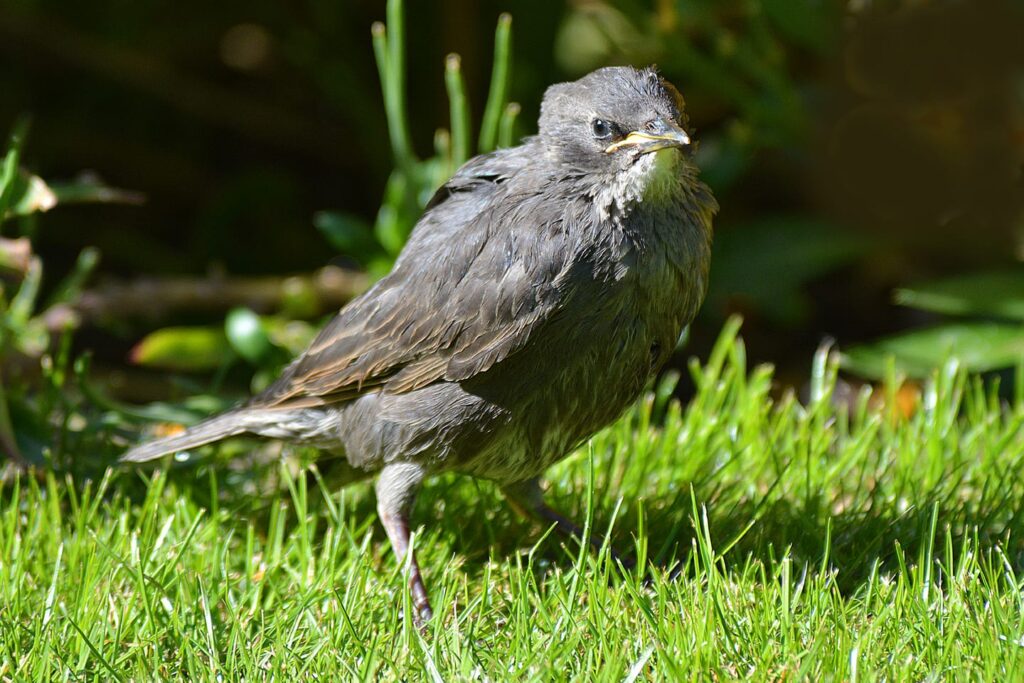
The ones who are lucky enough to make it to breeding age can expect to survive for two to three more years. If they were safe, they could expect to live to about 20 years of age.
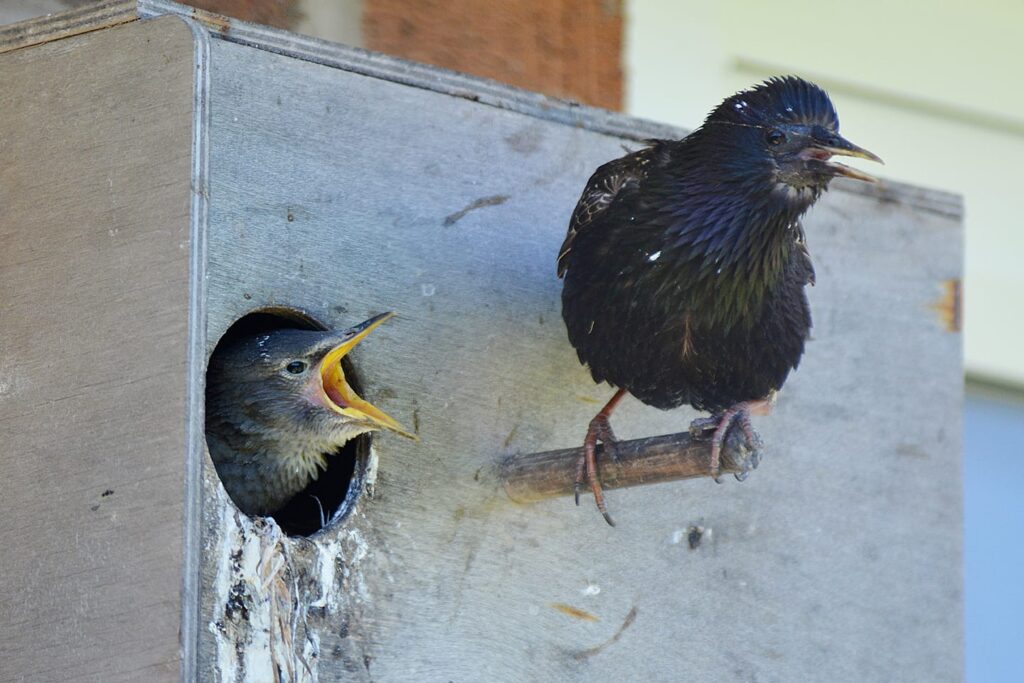
Although it’s still one of the commonest of garden birds, its decline elsewhere makes it a Red List species of high conservation concern.
So the clouds of birds which roost on our piers are even more important than they might seem.
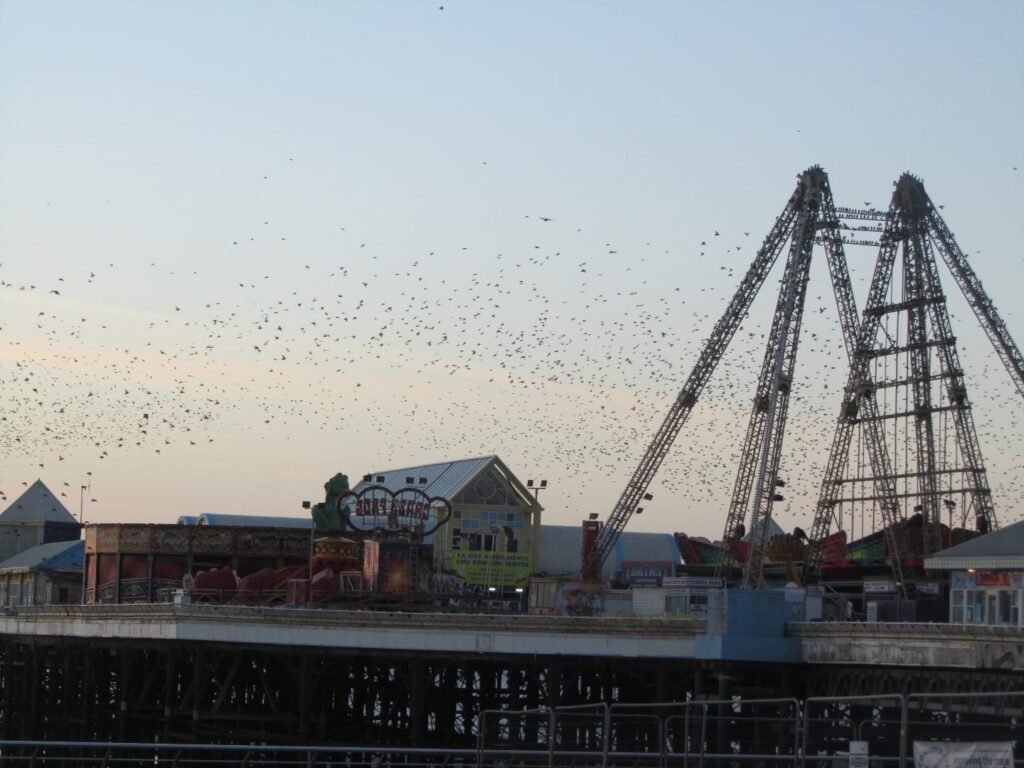
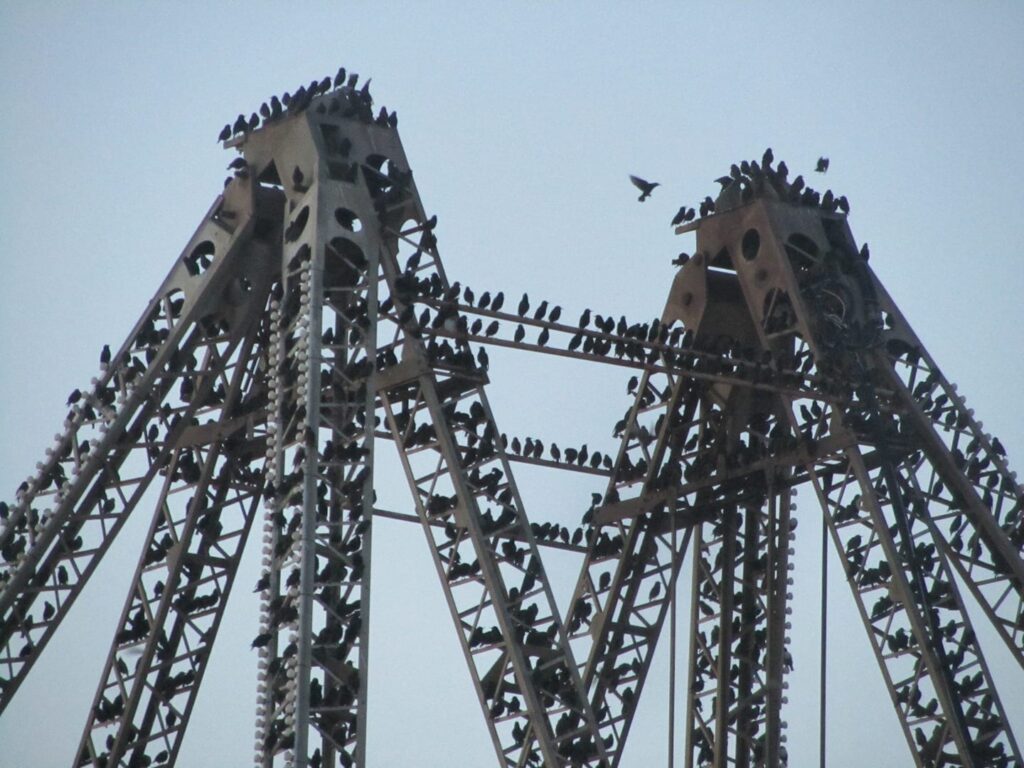
While you’re here…
Go to the homepage of the Live Blackpool website for the latest updates.
Love the Fylde Coast? Sign up for your email newsletter. Packed full of interesting things it arrives in your inbox all 52 weeks of the year.
Join us on Facebook at our Visit Fylde Coast Facebook Group and follow us on Twitter @visitFyldeCoast
Plus hundreds of videos to watch on our YouTube channel – from all over the Fylde Coast!
Booking a stay? Pick a safe, clean and legal place to stay, at the very best price. Book with the Visit Fylde Coast and StayBlackpool guide.













We took an elderly friend to see the starlings but we couldn’t find anywhere to park the car and it was too cold to get out and walk. Are there any viewing areas where one could park?
I can’t think of anywhere Hayley. Probably the road at the side of Springfield Market at the back of the Metropole would be the nearest spot where you can use your disabled badge.
Best wishes to you all at this time of the year, and hopefully a brighter 2021. Although I live in New Zealand and have reached an age where overseas travel is too much for me, I really enjoy looking at the short videos, especially those of Cleveleys and to see what has changed in the area over the years.